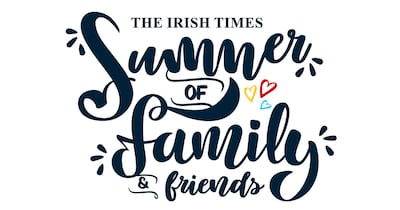
A book arrived in the post today. No surprise there. I had ordered and paid for it myself. Paintings for Sale is the title and it is a collection of the artwork of Canadian folk artist Maud Lewis.
I had little prior knowledge of Lewis nor of her work before making the purchase, but I was intrigued after a friend shared some images from the book on her Instagram account.
Eccentric animals? Oui, s’il te plait.
Lewis was born at the beginning of the 20th century and spent most of her life in the maritime province of Nova Scotia. This environment provides the backdrop to her paintings, which portray her home in a leafy Canadian seaside town in a nostalgic and hopeful manner.
Psychiatric nurses’ union to consider industrial action after talks at WRC fail
Rise in E.coli contamination found in private water supplies
Staffing shortfalls at University Hospital Kerry criticised by health watchdog
Fear of flying: ‘It’s getting on the flight that is the issue. I’m flying in my head for months beforehand’
Lewis’s paintings teem with life; engines puff, trees blossom, birds are in flight. Even in the darker winter months, the environment remains optimistic. Her use of colour is bold and cheerful; primary reds and blues meet splashes of yellow and pink. It is an enthusiastic representation of everyday life.
The artist has frequently been recognised for her “indominable spirit and will to create beauty in spite of adversity”. However, despite the artist’s renowned cheer, at certain points, her work presents a sense of “dis-ease”. In one painting, we see a woman and man in transit in a topless Model T Ford car. With the man in control of the wheel, the woman’s eyes betray a sense of fear.
The folk painter took every opportunity to pursue her craft and is documented to have decorated every surface in her married home with artwork, famously including her dustbin
Sometimes, raw human emotions can feel safer portrayed in the eyes of non-humans, and in Lewis’s recurring animal depictions, this sense of uneasiness is once more revealed; downtrodden oxen, angry cats, hungry birds, or the deer and foal pair that seem to be watching out or waiting for something.
The artist’s life was isolated and challenging. A child born to Lewis out of wedlock was removed from her care. In later years, Lewis entered a marriage with a controlling husband, a fish-peddler whom, it is alleged, had stolen the profits from her artwork and denied her access to heat and running water in their home.
“Halifax,” the artist explained, in a TV interview in 1965, “that’s the furthest I’ve been. And that’s a long time ago, before I got married.”
It is perhaps for this reason that, while far from boring, her artwork tended to often feature the same landscapes. Yet, the folk painter took every opportunity to pursue her craft and is documented to have decorated every surface in her married home with artwork, famously including her dustbin.
While it may remain virtuous, like Lewis, to remain outwardly cheerful in the face of this adversity, at times, anger may also be appropriate
Lewis was also born with a degenerative condition that disabled her significantly. “Her illness was bowing her spine, restricting her neck movements, and crippling her hands,” the author Sarah Milroy notes in the introduction of Paintings for Sale.
In the face of this adversity, Lewis remained a prolific painter, and one of Canada’s most celebrated folk artists. Her artwork has inspired the creativity of countless future artists including an orchestral piece by Russian-Canadian composer Nikolai Korndof, and a feature film that made its Canadian debut at the 2016 Toronto International Film Festival.
Maud Lewis is only one example of an exceptionally talented and prolific disabled artist. Myriads existed before her and since and add vibrancy to the contemporary art scene. For those, success comes despite the adversity of structures that limit the opportunities for these disabled artists to pursue their craft.
While it may remain virtuous, like Lewis, to remain outwardly cheerful in the face of this adversity, at times, anger may also be appropriate, and an instrument for change.
The art of disabled artists is as smart, intelligent, challenging, optimistic, irreverent, bold, comforting, hilarious, tasteful and distasteful as that of abled-bodied peers.
Harmonising the Basic Income for Artist Scheme and essential welfare entitlements would bear witness to that.




